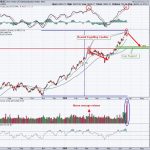Technical analysis is a popular method used by many traders to make decisions on when to buy or sell securities. However, when it comes to leveraged exchange-traded funds (ETFs), technical analysis may not always be as effective as with traditional stocks. Leveraged ETFs are a type of fund that aims to amplify the returns of an underlying index or asset by using financial derivatives and debt. While technical analysis can be a useful tool for analyzing securities, there are some key reasons why it may not work as well for leveraged ETFs.
One of the main reasons technical analysis may not be as effective for leveraged ETFs is the impact of compounding returns. Leveraged ETFs typically seek to achieve a daily return that is a multiple of the return of the underlying index. This means that the performance of leveraged ETFs can deviate significantly from the performance of the underlying index over longer periods. Technical analysis is based on historical price movements and patterns to predict future price movements. However, the compounding nature of leveraged ETF returns can cause these price patterns to be less reliable, making it challenging to accurately predict price movements using technical analysis alone.
Another factor that can limit the effectiveness of technical analysis for leveraged ETFs is the impact of volatility. Leveraged ETFs are inherently more volatile than traditional stocks or ETFs due to their leverage. Volatility can cause price movements to be more erratic and unpredictable, making it difficult for technical analysis indicators to provide accurate signals. In highly volatile markets, technical analysis may not capture the full extent of price fluctuations, leading to false signals and incorrect trading decisions.
Furthermore, leveraged ETFs may be impacted by other factors such as interest rates, market sentiment, and fund expenses, which can affect their performance in ways that may not be fully reflected in technical analysis. These additional factors add complexity to the analysis of leveraged ETFs and may require a more comprehensive approach beyond technical analysis alone.
While technical analysis can still be a valuable tool for analyzing leveraged ETFs, it is important for traders to consider the unique characteristics of these funds and supplement technical analysis with other fundamental and quantitative analysis techniques. By taking a holistic approach to analyzing leveraged ETFs and understanding the factors that can influence their performance, traders can make more informed decisions and manage the risks associated with trading these complex financial instruments.



